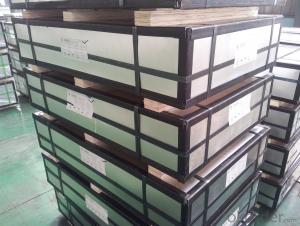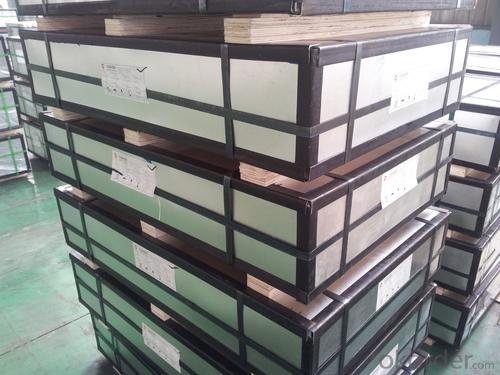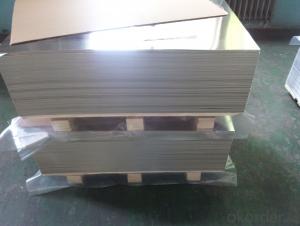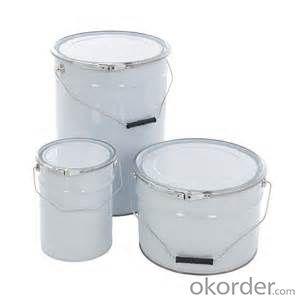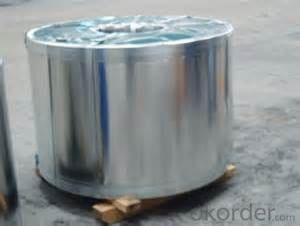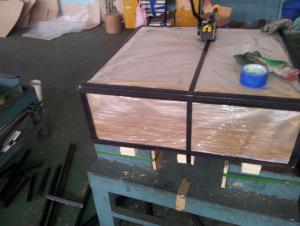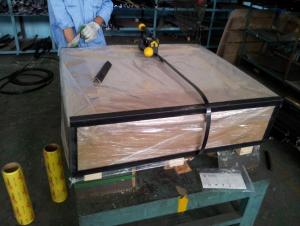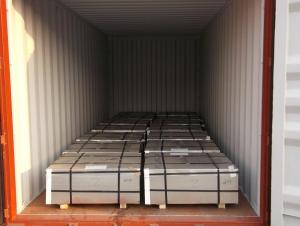High Quality of Tinplate for Paint Chemical Cans
- Loading Port:
- China Main Port
- Payment Terms:
- TT OR LC
- Min Order Qty:
- -
- Supply Capability:
- -
OKorder Service Pledge
OKorder Financial Service
You Might Also Like
Our tin plate (TP) products are made by coating tin using electrolysis on the surface of thin coldrolled steel sheet (black plates), with a thickness of 0.14~0.6 mm. Its shiny surface finish, superb corrosion resistance and formability make tin plates an ideal choice for the food industry and industrial parts producers. Our tin free steel sheet (ECCS) is widely accepted as a more economical substitute for the tin coated steel. Our TP/TFS products are widely used in the production of 3-piece and 2piece (D&I, DRD) cans as well as can lids and bottoms. Our products serve a variety of purposes, including material for steel EOE, toys, and electronic parts.
Our Tinplates Specification:
Standard: ISO 11949 -1995, GB/T2520-2000,JIS G3303,ASTM A623, BS EN 10202
Material: MR,SPCC
Thickness:0.15mm - 0.50mm
Width: 600mm -1150mm
Temper: T1-T5
Annealing: BA & CA
Coil Inner Diameter: 508mm
Weight: 6-10 tons/coil 1~1.7 tons/sheets bundle
Passivation:311
Oil: DOS
Surface: Finish,bright,stone,matte,silver
Packing:
1、For sheets: plastic or waterproof paper, metallic cover and angles, steel strips,wooden pallet.
2、For Coils: plastic or waterproof paper,plastic protect plate,steel strips.
Both Prime and Second Quality Are Available!!!
- Q: How is tinplate used in the manufacturing of electronic devices?
- Tinplate is commonly used in the manufacturing of electronic devices for its corrosion resistance and excellent conductivity. It is often utilized as a coating material for printed circuit boards (PCBs) to protect them from oxidation and enhance their durability. Additionally, tinplate is utilized in the production of connectors, switches, and other electrical components due to its ability to facilitate smooth electrical flow and ensure reliable performance.
- Q: What is the shelf life of tinplate canned goods?
- The shelf life of tinplate canned goods can vary depending on the type of food, packaging integrity, storage conditions, and the specific expiration date indicated on the can. However, in general, properly stored tinplate canned goods can have a shelf life of 1 to 5 years. It is important to check for any signs of damage, bulging, or rust before consuming canned goods to ensure their safety.
- Q: What are the benefits of using tinplate for pharmaceuticals?
- Tinplate offers several benefits for pharmaceuticals, including its excellent barrier properties that protect the medication from moisture, oxygen, and light. It is also resistant to corrosion, ensuring the integrity of the product throughout its shelf life. Moreover, tinplate is easy to sterilize, making it an ideal material for packaging drugs. Additionally, tinplate is sustainable, as it is 100% recyclable, reducing the environmental impact of pharmaceutical packaging.
- Q: How does tinplate perform in terms of tamper-evident features?
- Tinplate performs well in terms of tamper-evident features. It is a durable material that can be easily sealed to prevent tampering. The metal construction of tinplate makes it difficult to manipulate or break without leaving visible signs of tampering, making it an excellent choice for packaging goods that require tamper-evident features.
- Q: What are the common misconceptions about tinplate packaging?
- One common misconception about tinplate packaging is that it is not environmentally friendly. While tinplate is made from steel, which is a finite resource, it is highly recyclable and can be reused multiple times without losing its quality. Additionally, tinplate packaging has a long shelf life, reducing the need for frequent replacement. Another misconception is that tinplate packaging is easily damaged or dented. However, modern manufacturing techniques have made tinplate packaging highly durable and resistant to external pressures, ensuring the protection of the products inside.
- Q: Can tinplate packaging be used for household products?
- Yes, tinplate packaging can be used for household products. It is a versatile and durable material that offers protection and preservation to various household items, such as food, beverages, cosmetics, and cleaning products. Tinplate packaging is also recyclable and eco-friendly, making it a suitable choice for sustainable packaging solutions.
- Q: What are the advantages of using tinplate for electrical enclosures?
- There are several advantages of using tinplate for electrical enclosures. Firstly, tinplate offers excellent corrosion resistance, ensuring the durability and longevity of the enclosure even in harsh environments. Secondly, tinplate has high strength and rigidity, providing robust protection for the electrical components inside. Additionally, tinplate is a cost-effective option compared to other materials, making it a popular choice for mass production. Lastly, its malleability allows for complex shapes and designs, providing flexibility in enclosure manufacturing.
- Q: What are the different types of tinplate welding techniques?
- There are primarily two types of tinplate welding techniques: spot welding and seam welding. Spot welding involves the use of electrical resistance to join two tinplate sheets at specific points, while seam welding is a continuous process that creates a continuous weld along the length of the tinplate sheets.
- Q: How does tinplate contribute to the sterility of medical equipment?
- Tinplate contributes to the sterility of medical equipment by providing a protective barrier that prevents contamination. It is highly resistant to corrosion and can withstand high temperatures during sterilization processes, ensuring that the equipment remains free from microorganisms. Additionally, tinplate's smooth surface prevents the growth of bacteria and facilitates easy cleaning, further enhancing the sterility of medical instruments.
- Q: How does tinplate packaging handle exposure to different chemicals?
- Tinplate packaging is known for its excellent resistance to various chemicals, making it a reliable choice for storing and transporting a wide range of products. It can handle exposure to different chemicals without significant degradation or contamination.
Send your message to us
High Quality of Tinplate for Paint Chemical Cans
- Loading Port:
- China Main Port
- Payment Terms:
- TT OR LC
- Min Order Qty:
- -
- Supply Capability:
- -
OKorder Service Pledge
OKorder Financial Service
Similar products
Hot products
Hot Searches
Related keywords
